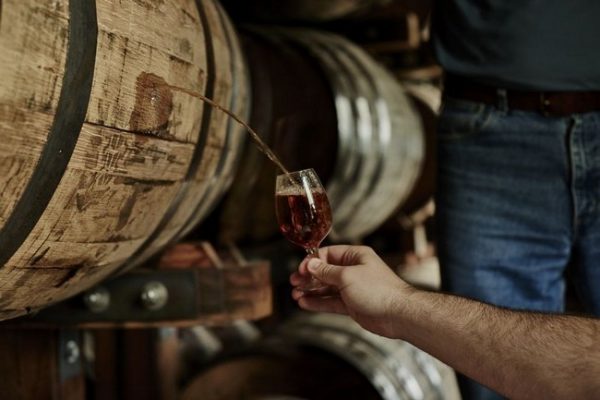
Have you ever wished you had an experienced winemaker looking over your shoulder as you prepared to harvest your first crop of grapes or tested acid levels? How about as you scratched your head over how to clarify a cloudy wine or tried fermenting fresh peach juice? We know what that’s like, so we asked some of our most trusted winemaking authorities to share a few of their personal tricks and tips they use for their own wines. Their combined years of knowledge revealed everything from the practical (pick the ‘jack stems’ out of your grapes) to the tactical (move a heavy carboy with a plant dolly). Help yourself to a few ideas and tackle your next winemaking endeavor like an expert. Grape Growing and Harvesting
*Wes Hagen, WineMaker’s “Backyard Vines” columnist and vineyard manager-winemaker at Clos Pepe Vineyards in Lompoc, California.*
– *Keep it cool* Harvest grapes cool and never let them get hot or sit in the sun after picking. Use food-grade dry ice to cool down must in the fermenter to extend cold soak. This is also a great idea for grapes picked on a hot day, or grapes that are hot from transport. – *Do the legwork* Spend some time picking ‘jack stems’ out of your must to avoid stemmy or vegetal character.
*Blending, Clarifying and Testing*
*Dan Mouer, contributor to WineMaker and 27-year winemaker from Richmond, Virginia.*
– *Take a taste (or two!)* Don’t be afraid to poke a (sanitized) wine thief into a carboy and draw a sample periodically. Make tasting notes in your cellar book or wine log. Taste it shortly after fermentation, then again routinely as it bulk ages. Then set aside a bit of the bottled stuff for occasional formal taste-tests. Don’t forget to top up your carboy after taking your sample. *John Peragine, contributor to WineMaker and avid home winemaker from Taylorsville, North Carolina.* – *Easy fining (gelatin)* If you’re in a pinch for a fining agent, try unflavored gelatin. Keep in mind, however, that it will have an effect on tannins. *Jack Keller, creator of The Home Winemaking Page (http:winemaking.jackkeller.net
*David Salaba, wine expert at Keystone Homebrew Supply of Montgomeryville & Bethlehem, Pennsylvania (www.keystonehomebrew.com
– *Get a clean juice sample* After thoroughly stirring the must in the open-top fermenter, take a large kitchen strainer and place it on top of the must. Slowly press the strainer into the must with both hands, being careful not to push too fast. A clean puddle of juice will slowly fill the basket – without all of the gunk! You can also use this method for a sample to check the fermentation progress. Just remember that the cap must be broken up and stirred thoroughly or else the ongoing fermentation will change the characteristics of the juice in the cap vs. the juice at the bottom of the fermenter.
*Bottling and Aging *
*Walt Huber, frequent contributor to WineMaker, and winemaking instructor specializing in sparkling wine from Maineville, Ohio.*
– *Prevent overflowing carboys* When racking from one carboy to another, rack the first cup or so into a wine glass. This gives you a small sample to smell and taste while the racking finishes, and also ensures that the receiving carboy doesn’t overflow. All carboys are not exactly the same. If the first one is a little bigger than the second, it won’t overflow. When the racking is complete, use the wine in the glass to top up the receiving carboy. *Wayne Stitzer, winemaking consultant and professional member of the American Wine Society.* – *Keep a library of your wines* Put away a couple bottles of each vintage and variety for future reference and to monitor for aging potential and shelf life. This is also a gauge for improving skills and styles. The only way to know if you are getting better is to have something to compare. This is often overlooked because when a few bottles are produced they tend to all get consumed. *David Salaba, wine expert at Keystone Homebrew Supply of Montgomeryville & Bethlehem, Pennsylvania (www.keystonehomebrew.com
*Wine Kits*
*Tim Vandergrift, WineMaker’s “Wine Kits” columnist and technical services manager at Winexpert Ltd.*
– *Find your fermenter’s fill line* The best way to hit the right volume in your primary fermenter is by filling the carboy up to the neck with cool water. Rack or pour the water into the primary and draw a line with permanent marker at the water level. This will be the fill level. – *Have patience* Just because your wine kit is ready to drink in six weeks doesn’t mean that it’s ready to drink! Try a bottle in three months, another at six, then decide if it’s ready. *Walt Huber, frequent contributor to WineMaker, and winemaking instructor specializing in sparkling wine from Maineville, Ohio.* – *Watch out for water* Always use distilled or reverse osmosis water if you’re adding it to your wine, especially in kits. City, spring and well water may have minerals or chemicals that can cause off flavors.
*Temperature and Fermentation*
*Jack Keller, creator of The Home Winemaking Page
– *Start a starter* A balanced yeast starter solution begun 20 hours before needed will significantly increase the amount of live cells you start with. Use a cup of water, a teaspoon of sugar and a pinch of yeast nutrient dissolved in it. After four hours, add 1/4 cup of must or orange, apple or grape juice. Add another 1/4 cup of must or juice every four hours. For periods beyond 20 hours, begin with a pint of starter solution instead of a cup. – *Check your calibrations* If you purchase (or are given) a used hydrometer, always calibrate it before using it. Very old hydrometers were calibrated at 4 °C (39 °F). Then calibration changed to 15 °C (59 °F) and stayed that way for half a century. These days, most hydrometers are calibrated to 20 °C (68 °F) at which temperature distilled water should measure a specific gravity of exactly 1.000 (0 °Brix). *Jim Harrington, Harrington Press Winemaking & Homebrew Supplies (www.harringtonpress.com
*Country Wines*
*Alexis Hartung, WineMaker’s “Varietal Focus” columnist and owner of Country Wines winemaking supply (www.countrywines.com
– *Freshness is key* It’s best to use ripe fruit but overripe fruit can bear potential problems (bacteria, off-flavors). Also, cut away and discard bruised sections. For fresh, fruity flavors rack the wine three to six weeks after the fermentation stops. – *Choose the right additives* Use potassium metabisulfite, not sodium metabisulfite to avoid a possible salty taste. Also be sure to carefully measure sulfite to be sure you don’t use too much. *Jack Keller, creator of The Home Winemaking Page (http:winemaking.jackkeller.net
*Techniques*
*Chris Farley of Northern Brewer homebrew supply (www.northernbrewer.com
– *Draining your carboys* When you’re emptying a carboy filled with cleaning solution, try inserting a small (one foot length or so) tube while the carboy is upside-down so part of it sticks above the water line. Air will exit out of the tube allowing the liquid to come out fast, which speeds up your cleaning time.
*Daniel Goodman, of The Good Brewer
– *Storing carboys* After you clean and sanitize your carboy, you can put it up for long-term storage (or short-term if you turn over wine quickly enough) by putting in a pint or two of water and three or four campden tablets. Place a solid stopper on the carboy and turn it upside down (use a carboy holder if you have one). As the tablets dissolve, they create SO2. Since the carboy is upside down it creates a seal so the gas doesn’t escape. When you’re ready, just empty it out and fill – no prep! – *Moving carboys* To move heavy carboys, use a plant dolly like the ones used for large potted plants. They are only a few inches high, which makes it much easier to get them on the dolly and wheel them to wherever you want them.





